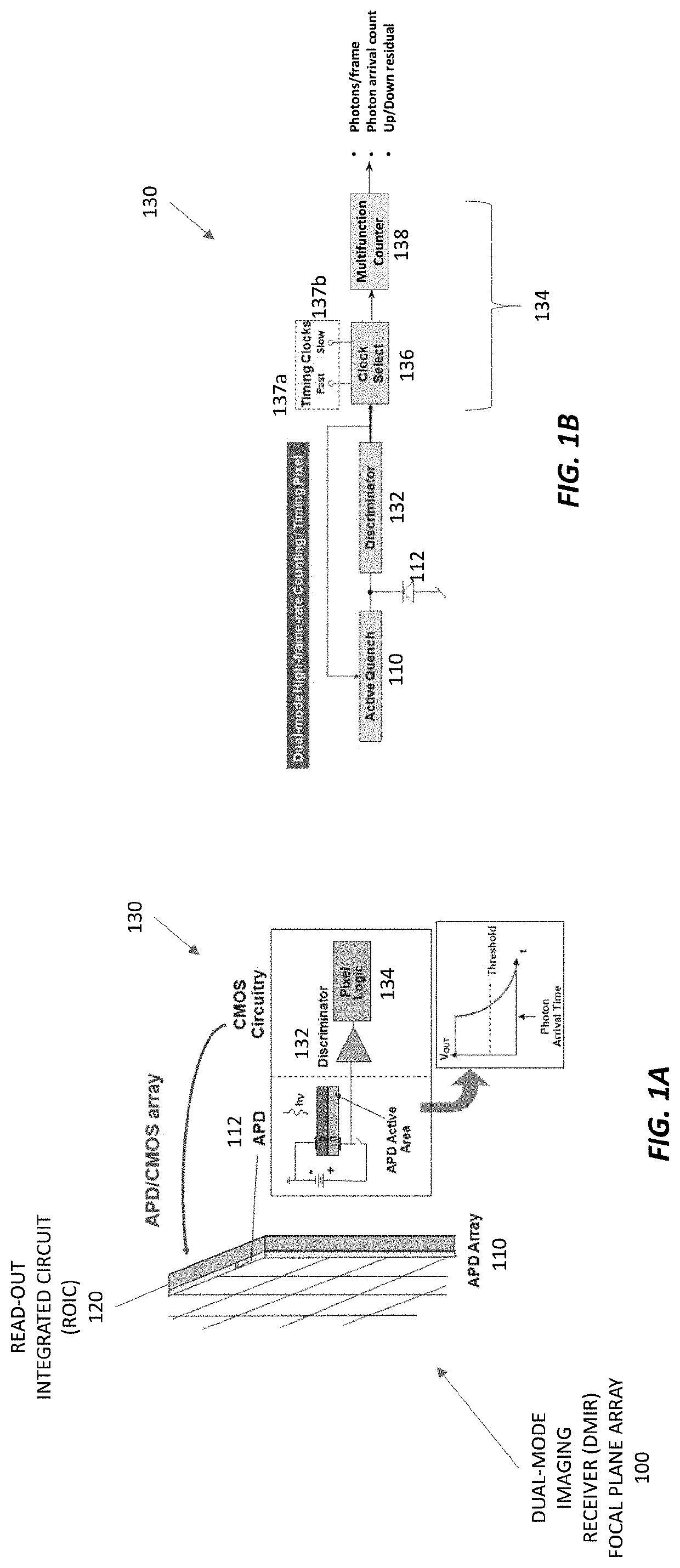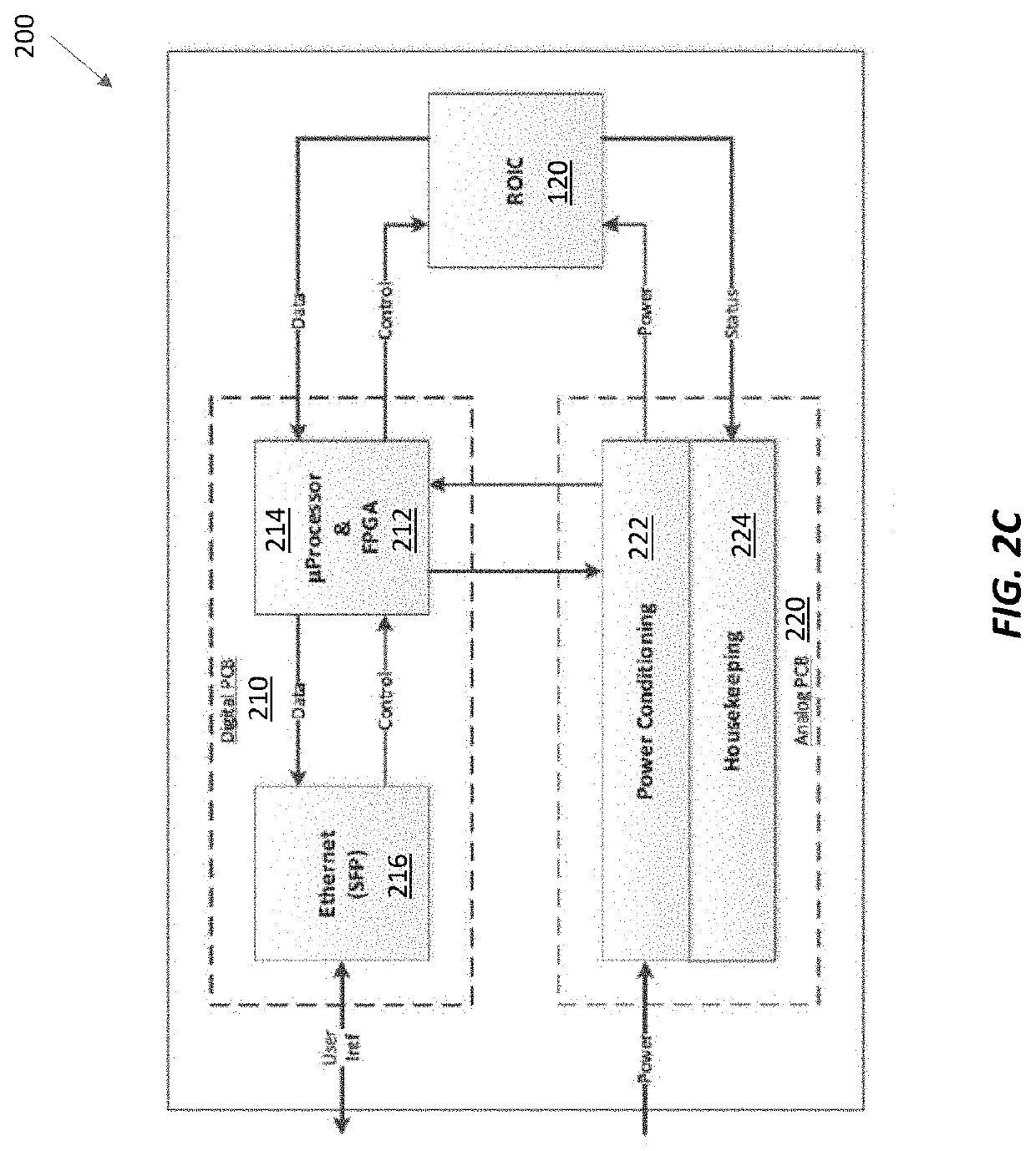Dual-mode imaging receiver
a receiver and dual-mode technology, applied in the field of dual-mode imaging receivers, can solve the problems of consuming less power, small dmir, light, etc., and achieve the effects of eliminating free-space optical communication, increasing swap, cost and complexity of the receiver, and increasing the latency in establishing a communication link
- Summary
- Abstract
- Description
- Claims
- Application Information
AI Technical Summary
Benefits of technology
Problems solved by technology
Method used
Image
Examples
Embodiment Construction
[0030]A dual-mode imaging receiver (DMIR) includes a focal plane array (FPA) and read-out integrated circuit (ROIC) enabling individual pixels to be switched between imaging and communications modes. The ROIC detects, demodulates, and reads data at each pixel with an off-chip bandwidth proportional to the number of pixels receiving active communication signals rather than the total number of pixels in the FPA. Each pixel operates independently, so the DMIR can simultaneously detect many communications signals from different angle in wide area field of view. As the signal sources move with respect to the DMIR, the signals are picked up by different pixels in the DMIR, eliminating the need for precision steering or scanning of the DMIR. This makes the DMIR smaller, lighter, and less power hungry than a conventional narrow-beam free-space optical communications receiver with a precision gimbal for pointing, acquisition, and tracking. The DMIR can be integrated with an agile-beam laser ...
PUM
 Login to View More
Login to View More Abstract
Description
Claims
Application Information
 Login to View More
Login to View More - R&D
- Intellectual Property
- Life Sciences
- Materials
- Tech Scout
- Unparalleled Data Quality
- Higher Quality Content
- 60% Fewer Hallucinations
Browse by: Latest US Patents, China's latest patents, Technical Efficacy Thesaurus, Application Domain, Technology Topic, Popular Technical Reports.
© 2025 PatSnap. All rights reserved.Legal|Privacy policy|Modern Slavery Act Transparency Statement|Sitemap|About US| Contact US: help@patsnap.com



